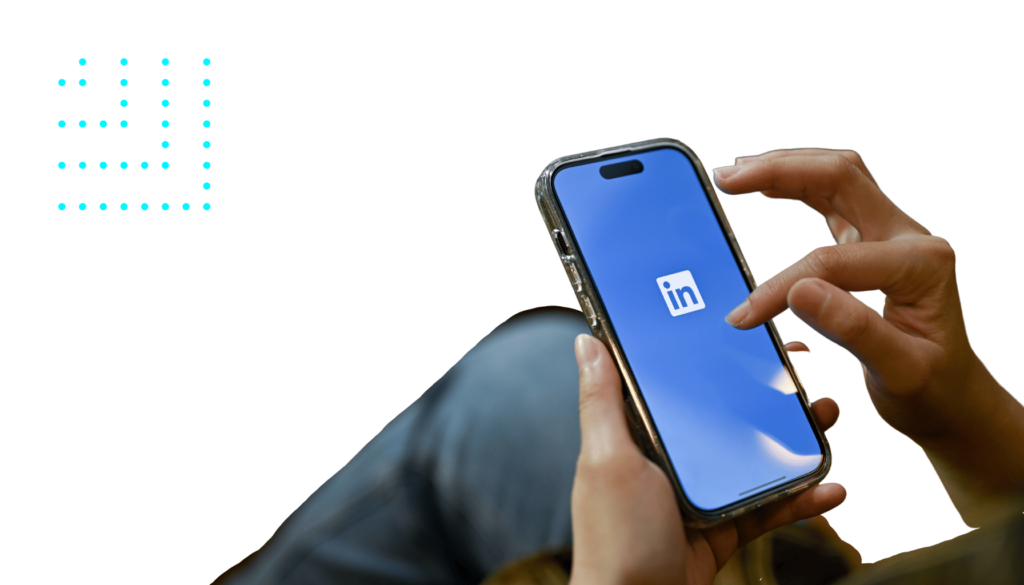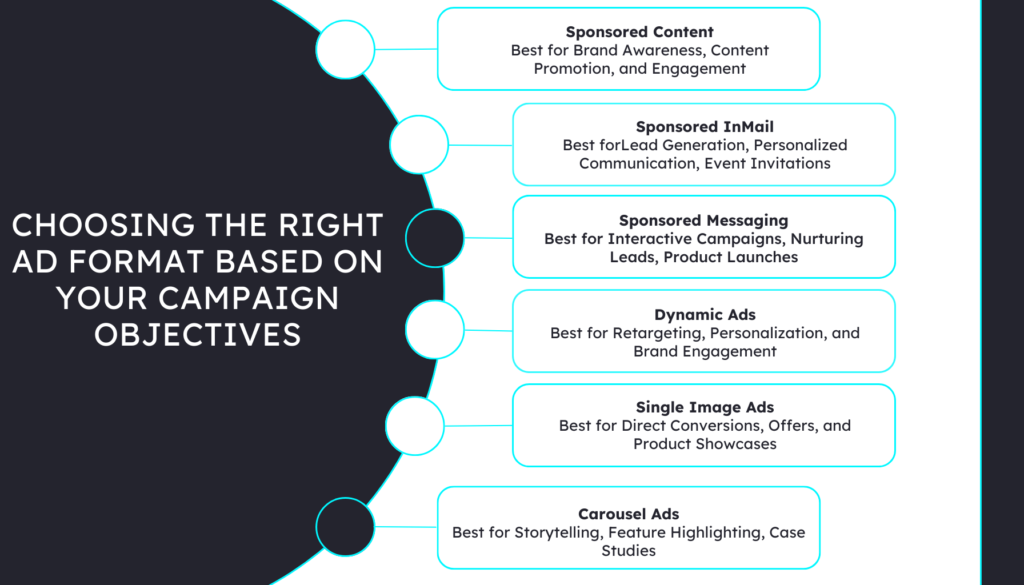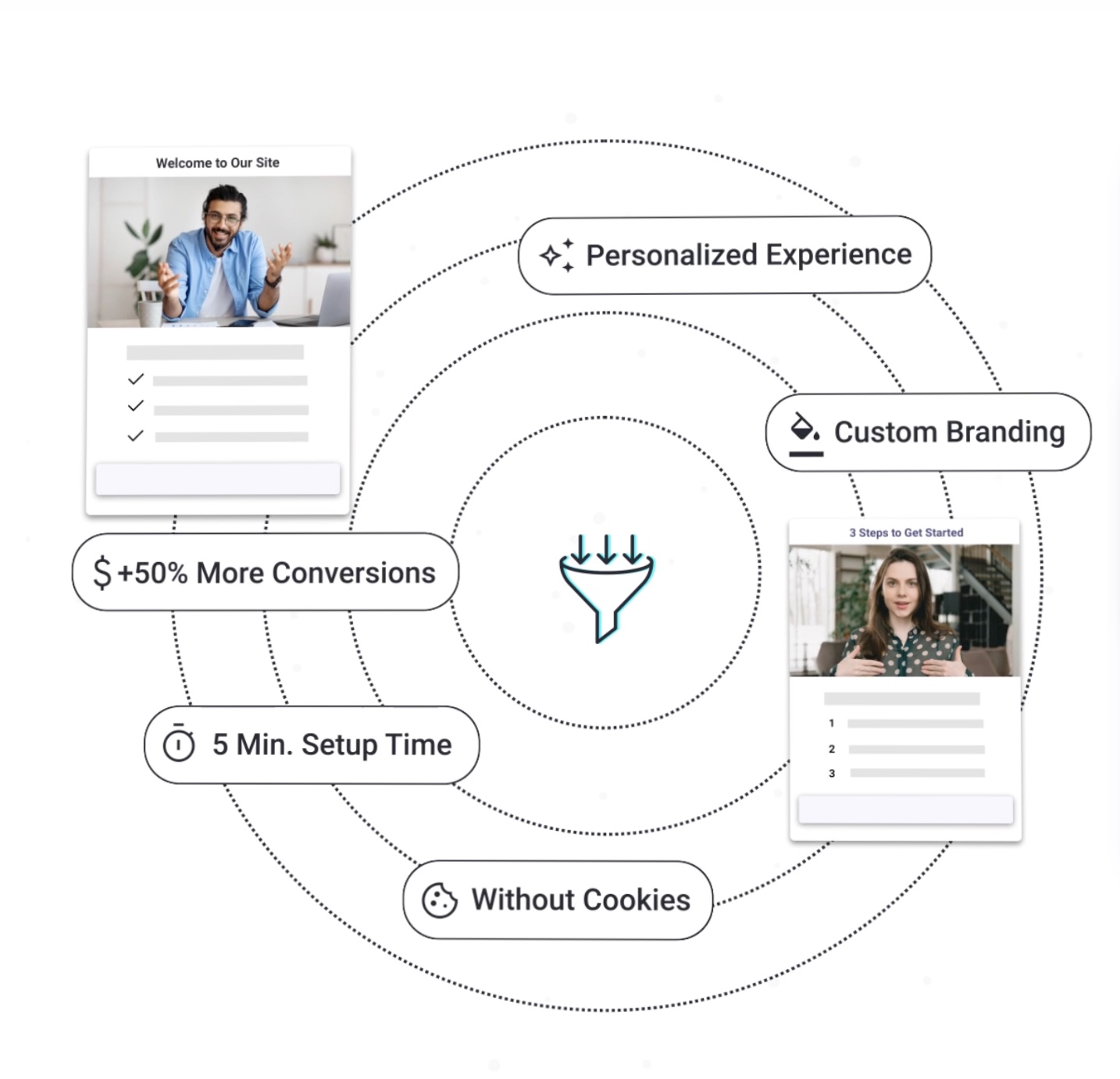How to Improve LinkedIn Ads Conversion Rate


LinkedIn Ads is a potent tool tailored for reaching the professional audiences that matter most to businesses. In the world of online advertising though, optimizing conversion rates on LinkedIn Ads can be a formidable challenge. If you have been doing marketing for a while, you must have already heard ‘But LinkedIn ads are so expensive!’. Yes, we have been there too.
However, working on improving your LinkedIn ads’ conversion rate will bring substantial rewards in terms of lead generation, customer acquisition, and overall ROI.
In this article, we’ll navigate the complexities of bidding strategies and budgets with a data-driven mindset, and employ cutting-edge tracking and analytics tools to dissect campaign performance.
What is a Good Conversion Rate for LinkedIn Ads?
LinkedIn Ads, like any digital advertising platform, requires a keen understanding of what constitutes a good conversion rate. However, determining a benchmark can be complex, as various factors, such as ad format and the nature of the business, come into play.
1. Sponsored Content:
- B2B Services: In the realm of Business-to-Business (B2B) services, where lengthy sales cycles are common, a good conversion rate might hover around 2% to 5%. These ads often aim to generate leads or direct users to informative content, and conversions can take time.
- E-commerce: For e-commerce businesses, a solid conversion rate may range from 4% to 8%. Sponsored Content in this sector typically promotes products or services directly to potential buyers, yielding quicker results.
2. Sponsored InMail:
- B2B Software Solutions: In the B2B software sector, where building trust and nurturing leads is paramount, a good conversion rate could be in the range of 6% to 10%. These ads often involve personalized messages and require a high degree of user engagement.
- Recruitment: When targeting job seekers or recruiters, a respectable conversion rate may fall between 8% to 12%. Sponsored InMail messages are highly targeted in this case, addressing specific job openings or candidate profiles.
3. Sponsored Messaging:
- Event Promotion: If you’re using Sponsored Messaging to promote events, conversion rates of 10% or higher can be deemed successful. These ads typically reach a highly engaged audience interested in attending events.
- Financial Services: In the finance sector, where trust and credibility are vital, conversion rates ranging from 5% to 8% may be considered solid. Sponsored Messaging often conveys complex information, requiring a thoughtful approach.
It’s crucial to note that while these benchmarks provide a general idea of what to expect, they can vary significantly depending on factors like ad quality, targeting precision, and industry competition. Therefore, rather than aiming for a fixed percentage, it’s advisable to set specific, measurable goals based on your unique campaign objectives and industry standards.
Here are some strategies you can use to optimize your LinkedIn Ads conversion rate.
Choosing the Right Ad Format Based on Your Campaign Objectives
Selecting the most appropriate ad format on LinkedIn is a pivotal decision that directly impacts the effectiveness of your advertising campaign. Each ad format offers unique strengths and capabilities, making it essential to align your choice with your specific campaign objectives. Here’s a closer look at how to make the right selection:
1. Sponsored Content:
- Best for: Brand Awareness, Content Promotion, and Engagement
Sponsored Content is the go-to choice for campaigns aimed at boosting brand visibility, sharing valuable content like blog posts, videos, or infographics, and driving audience engagement. These ads seamlessly appear in users’ LinkedIn feeds, making them an excellent choice for delivering informative or thought-provoking content.
2. Sponsored InMail:
- Best for: Lead Generation, Personalized Communication, Event Invitations
Sponsored InMail shines when your primary goal is to generate leads, establish one-on-one personalized communication, or invite users to attend events or webinars. These ads are delivered directly to users’ LinkedIn inboxes, ensuring a high level of visibility and engagement.
3. Sponsored Messaging:
- Best for: Interactive Campaigns, Nurturing Leads, Product Launches
Sponsored Messaging is ideal for interactive campaigns where you want to foster engagement, nurture leads, or promote new products or services. These ads allow you to initiate conversations with your audience, making them feel more engaged and involved.

4. Dynamic Ads:
- Best for: Retargeting, Personalization, and Brand Engagement
Dynamic Ads are designed for retargeting and personalization. They automatically customize ad content based on users’ LinkedIn profile data. Use them to re-engage with users who have previously interacted with your brand or to deliver highly personalized messages.
5. Single Image Ads:
- Best for: Direct Conversions, Offers, and Product Showcases
Single Image Ads are straightforward and effective for driving clicks and conversions. They work well for promoting specific offers, discounts, or product showcases. These ads provide a clear and concise message to users.
6. Carousel Ads:
- Best for: Storytelling, Feature Highlighting, Case Studies
Carousel Ads are a versatile choice, allowing you to tell a visual story, highlight multiple product features, or showcase a series of case studies in a single ad. Users can swipe through the cards, providing a more immersive experience.
To make an informed choice, start by defining your campaign objectives clearly. Are you looking to increase brand visibility, generate leads, engage with your audience, or drive direct conversions? Once you have a clear objective in mind, match it with the ad format that best complements your goals. LinkedIn’s diverse ad formats provide you with the flexibility to tailor your campaigns for optimal results, so choose wisely to maximize your campaign’s impact.
Crafting Compelling Ad Creative
Optimizing ad creatives is a crucial step in improving the conversion rate of your LinkedIn Ads campaign. Ad creatives are the first thing that users see when they encounter your ads, and they play a significant role in capturing users’ attention, communicating your message, and persuading them to take action.
Here are some key tips and best practices for optimizing ad creatives:
- Visual Consistency: Maintain a consistent visual style across your ads to reinforce your brand identity. Use the same color schemes, fonts, and imagery to establish familiarity.
- High-Quality Imagery: Invest in high-resolution images that reflect professionalism. Showcasing your products, team, or workplace can add authenticity to your ads.
- Infographics: Visual data representations like infographics can convey complex information in a concise and engaging manner. Use them when presenting statistics or industry insights.
- Audience-Centric Messaging: Craft ad copy that addresses your audience’s specific pain points, challenges, or aspirations. Speak directly to their needs and desires.
- Compelling Headlines: Grab attention with concise, impactful headlines that pique curiosity and encourage further reading.
- Clear Value Proposition: Clearly communicate the unique value your product or service offers. What sets you apart from the competition?
- Call-to-Action (CTA): Include a strong CTA that tells users what action to take next. Use action verbs like ‘Learn More’, ‘Request a Demo’, or ‘Get Started’.
Use Advanced Targeting Strategies
To supercharge your campaign, it’s essential to employ advanced targeting strategies that allow you to reach the most relevant professionals. Here’s how to harness the power of advanced targeting on LinkedIn:
- Leverage LinkedIn’s Wealth of Professional Data: LinkedIn provides an array of targeting options based on users’ professional attributes. Take advantage of these options to narrow down your audience by factors such as job title, industry, company size, seniority level, and more. The more specific you get, the more tailored your message can be.
- Utilize Matched Audiences: LinkedIn’s Matched Audiences feature enables you to retarget website visitors, upload email lists for custom targeting, and engage with LinkedIn members who’ve interacted with your content. This powerful tool helps you reconnect with users who have already shown interest in your brand.
- Explore Lookalike Audiences: Similar to other advertising platforms, LinkedIn allows you to create Lookalike Audiences. By analyzing the characteristics of your existing high-performing audience segments, LinkedIn can help you find new prospects who share similar attributes, expanding your reach to potentially valuable leads.
- Engage with Account-Based Marketing (ABM): For B2B marketers, ABM is a game-changer. LinkedIn offers robust ABM targeting options, enabling you to target specific companies or even individual accounts. This precision is particularly beneficial for targeting key decision-makers within your target accounts.
- Layer Targeting Options: Combine different targeting criteria to create hyper-focused audience segments. For example, you can target senior HR managers in the tech industry within a specific geographic region. Layering criteria allow you to pinpoint your ideal audience with exceptional accuracy.
- Utilize Audience Expansion with Care: While it’s important to narrow down your audience for precision, don’t dismiss the Audience Expansion feature altogether. LinkedIn’s algorithm can identify users similar to your target audience, helping you discover additional valuable leads.
- A/B Test Targeting Segments: Just as you A/B test your ad creatives, consider A/B testing different audience segments. Experiment with various targeting criteria to identify which segments generate the best results. This data-driven approach helps you refine your strategy over time.
- Monitor and Refine: Continuously monitor the performance of your targeting strategies. LinkedIn offers comprehensive analytics that allows you to assess which targeting criteria are driving the most engagement and conversions. Use these insights to fine-tune your campaigns for better results.
Optimizing Landing Pages
Landing pages are key elements of your LinkedIn Ads campaigns. Even the most compelling ad creative and precise targeting won’t yield results if your landing pages fall short. To maximize your conversion rates, it’s crucial to ensure a seamless alignment between your ad’s messaging and the content on your landing page. Users should instantly recognize they’ve landed in the right place. If your ad promises a specific offer or information, deliver it on the landing page.
Having a personalized landing page has proven to be the most effective strategy to optimize your landing page conversions. Our AI-driven marketing solution, Pathmonk Accelerate tailors your landing page based on your visitor’s intent by delivering micro-experiences that match the stage of the buying journey. Pathmonk Accelerate will predict your users’ next likely action, show them hyper-relevant interactions, and achieve real-time engagement on your website; ultimately enhancing the user experience and increasing conversion rates by up to +50%.
More Sales From Your Website With AI
Personalized interactions based on your users' behaviour to get +50% more conversions.

LinkedIn Ads Bidding and Budget Strategies
Bidding and budget allocation are critical aspects of your LinkedIn Ads campaign that can significantly impact your conversion rate and overall ROI. Implementing effective bidding and budget strategies requires a balance between optimizing for results and managing your advertising spend efficiently. Here are practical and actionable insights to help you navigate this crucial aspect of your LinkedIn advertising efforts.
- Set Clear Objectives: Before diving into bidding and budgeting, establish clear campaign objectives. Are you aiming to generate leads, drive website traffic, or boost brand awareness? Clearly defined goals will inform your bidding strategy and help you allocate your budget effectively.
- Understand LinkedIn’s Bidding Options: LinkedIn offers several bidding options, including CPC (Cost Per Click), CPM (Cost Per 1,000 Impressions), and CPA (Cost Per Action). Each has its advantages. For example, CPC bidding is ideal for driving clicks, while CPM is suitable for brand visibility. CPA bidding can be effective for lead generation. Experiment with different bidding options based on your goals.
- Consider Automated Bidding: LinkedIn offers automated bidding strategies like ‘Maximize Clicks’ and ‘Target CPA’. These can simplify your bidding process and optimize your campaign for specific outcomes. Test automated bidding against manual bidding to identify which one yields better results for your objectives.
- Start with a Competitive Bid: In the initial phase of your campaign, set your bids slightly above the recommended bid range to ensure your ads gain visibility. Monitor the performance closely, and adjust your bids as needed to strike a balance between cost efficiency and results.
- Utilize Bid Adjustments: Bid adjustments allow you to fine-tune your bids based on various factors like device type, location, and audience attributes. Analyze your campaign data to identify which segments perform best and allocate higher bids to those segments to maximize conversions.
- Implement Ad Scheduling: Use ad scheduling to control when your ads are displayed. Analyze the times and days when your target audience is most active and allocate more budget during those periods to maximize engagement and conversions.
- Monitor Ad Relevance: LinkedIn rewards ads with higher relevance scores with more favorable bidding outcomes. Ensure your ad creative and landing pages are aligned with your audience’s interests and needs to improve ad relevance and potentially lower your CPC or CPA.
Conclusion
In the dynamic realm of LinkedIn advertising, optimizing your conversion rates is both an art and a science. By meticulously crafting compelling ad creative, harnessing the full power of advanced targeting, and ensuring that your landing pages are finely tuned, you lay a solid foundation for success. Your bidding and budget strategies act as the guiding compass, directing your campaign toward its objectives.
In this platform, every click and conversion represents an opportunity to connect with decision-makers, nurture leads, and drive business growth. The journey toward improved conversion rates is a continuous one, marked by ongoing experimentation, adaptation, and a commitment to delivering value to your audience.





